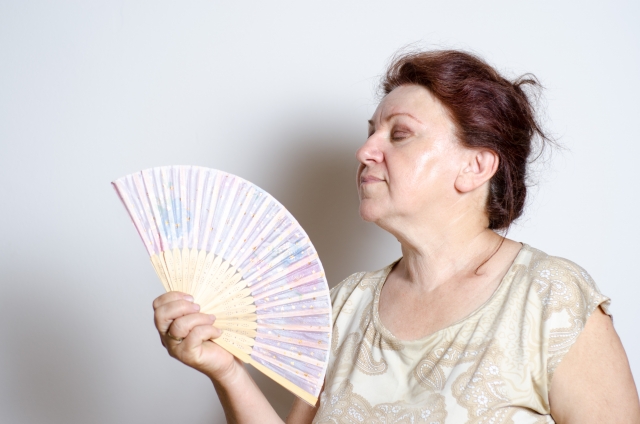When hot flashes happen, often it feels like it’s too late to do anything. Sweating, stickiness on the skin, that rush of fiery heat moving through the body. There are many methods for addressing hot-flashes which are one of the most typical symptoms of menopause. There are both preventative cures as well as treatments that can be performed in the moment.

Why Hot Flashes
About 75% of American women get hot flashes during perimenopause or menopause. If you are experiencing this symptom of transition, you are not alone. Though the direct cause for hot-flashes isn’t known, there are many theories. Some scientists say that changes in reproductive organs causes the changes in hormones which can manifest in hot flashes. Similarly, changes to your body’s temperature regulator, the hypothalamus, has also been linked to hot flashes. The average woman who experiences hot-flashes will have them for just over 7 years, and hot flashes can begin at any stage of menopause, as well as before menopause begins. Some women get hot flashes 5-10 years before their last period, others during perimenopause and menopause, and others after menopause ends.
Who Gets Hot Flashes
Studies regarding ethnicity and race have also found some intriguing trends in who is most susceptible to hot-flashes. African American and Latina women are more susceptible to this symptom of menopause. Women with lower education levels tend to have symptoms that last longer, sometimes 10-15 years. Lower education levels often correlate with lower socioeconomic status, leading researchers to analyze the effect that stress may have on causing hot flashes as marginalized women often experience a greater variety and depth of social, economic, and other stresses. White and Asian women are less likely to get hot-flashes. However, white and obese women are more likely to have early onset of hot flashes. Women who smoke tend to have later onset hot-flashes. African American women are three times more likely to have hot flashes that last beyond menopause. The research continues into whether or not hot-flashes are genetic or environmental.
Risk Factors of Hot Flashes
Other potential risk factors for who gets hot flashes include smoking, potentially being overweight or obese, and having an irregular menstrual cycle. However, these factors manifest in different ways, and often risk-factors related to weight or irregular cycles are linked to having hot-flashes when younger, not necessarily during menopause. Women who report living with consistently high levels of stress and anxiety are also more prone to experiencing hot-flashes.
Super Flashers
One of the newer categories of hot-flashes has been deemed “super flashers,” to denote women who have hot-flashes early on, while they’re still menstruating, and then continue to have hot-flashes during and after menopause. These women, “super flashers,” tend to have hot-flashes for more than a decade.
Overall, there are many women in the United States who experience hot flashes and have to learn how to manage the symptoms. For some women, this experience may be mild, yet for others, it can be life-shifting. There are both medical and behavior ways to address hot-flashes.
Find what what exactly cause hot flashes and night sweats, and how to get rid of hot-flashes and night sweats naturally.


